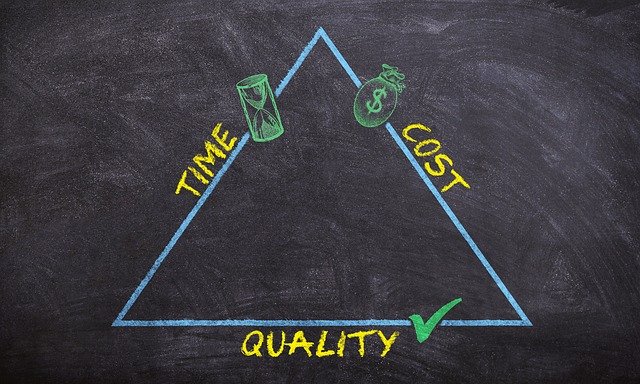First, what is a flexible budget?
A flexible budget is a budget that adjusts to the activity or volume levels of a company. A flexible budget continuously “flexes” with a business’s variations in costs, as opposed to a static budget, which stays with the amounts decided upon when the budget was created.
Please continue reading as I provide more information about what a flexible budget entails.
An Explanation Of A Flexible Budget
Adapting to shifts in actual revenue levels is possible with a flexible budget. Once an accounting period is over, actual revenues or other activity metrics are entered into the flexible budget, which then creates a budget that is tailored to the inputs. The budget is then contrasted with actual costs in order to maintain control. Making a flexible budget requires the following steps:
- Determine all fixed costs and separate them in the budget model.
- As activity measures change, quantify the extent to which all variable costs change.
- Make a budget model where fixed costs are “hard coded” and variable costs are expressed as a portion of the pertinent activity measures or as a cost per unit of activity measure.
- After an accounting period has ended, input actual activity measures into the model. The flexible budget’s variable expenses are updated as a result.
- To compare the flexible budget that results with actual expenses, enter the finished period’s data into the accounting system.
This method deviates from the more typical static budget, which only consists of fixed sums that do not change in accordance with actual revenue levels. Since both the budgeted and actual expenses are based on the same activity measure, budget versus actual reports produced under a flexible budget typically produce variances that are significantly more relevant than those produced under a static budget. As a result, the variances will probably be more manageable than they would be in a static budget.
Any budget, regardless of how sophisticated it is, can be made flexible. Below are some examples of the concept’s variations. A flexible budget, in other words, gives a business a tool for comparing performance against the budget at various levels of activity.
Read about: What Is A Static Budget?
Flexible Budget Types
Basic Flexible Budget
The flexible budget, at its most basic, adjusts those expenses whose amounts directly correspond to revenues. The model usually includes a percentage that is multiplied by actual revenues to determine what expenses should be at a given revenue level. A cost per unit rather than a percentage of sales may be used to calculate the cost of goods sold.
Intermediate Flexible Budget
Some costs vary based on activity measures other than revenue. With changes in headcount, for instance, telephone costs may change. If so, one can incorporate these additional activity measures into the flexible budget model.
Advanced Flexible Budget
Only certain ranges of revenue or other activities may affect expenditures; outside of those ranges, a different proportion of expenditures may be applicable. If the measurements on which they are based fall outside of their target ranges, a sophisticated flexible budget will adjust the proportions for these expenditures.
Example Of A Flexible Budget
Assume a business decides that the cost of electricity and supplies will vary by about $10 for each machine hour (MH) used. Additionally, it is aware that other expenses total around $40,000 monthly and are fixed expenses. The average monthly machine hours range from 4,000 to 7,000. Based on this data, the monthly flexible budget would be $40,000 plus $10 per MH.
Let’s now use various volume levels to illustrate the flexible budget. If January required 5,000 machine hours, the flexible budget for January would be $90,000 ($40,000 fixed + $10 x 5,000 MH). In the event that machine hours in February total 6,300, the monthly flexible budget for that month will be $103,000 ($40,000 fixed + $10 x 6,300 MH). If March has 4,100 machine hours, the flexible budget for March will be $81,000 ($40,000 fixed + $10 x 4,100 MH).
The Process For A Flexible Budget
Everyone has learned a lesson in recent years: no matter how hard we try, we can’t predict the future.
How would you know what your expenses would be in six months’ time without the use of psychic abilities? Will weather, technology, or a global pandemic have an impact on your business? Who knows!
Flexible budgets function by relieving the burden of making predictions about the future.
The first step in creating a flexible budget is to give all fixed monthly costs a fixed value. Next, decide what proportion of your revenue should go toward your variable costs.
Flexible budgets are dynamic systems that permit immediate expansion and contraction. They consider how unpredictable life is and how a business is an organic, growing system.
With a flexible budget model, you can adjust your cost of goods sold (COGS) by a predetermined percentage to account for a sudden tripling of demand while still having enough cash on hand to fulfill these orders.
For instance, if your company projects that five units at a price of $5 each will be sold each month, you can anticipate monthly revenue of $25.
Let’s say each product unit costs $1 to produce, in which case your monthly budget for this would be $5.
The demand for 20 units, which would cost $20 to produce, would arise next month if your product suddenly becomes popular on social media and goes viral.
The issue is that your monthly budget is only $5. A flexible budget can be used in this situation to justifiably raise costs based on actual revenue received.
Another budget model, such as a static budget, would have put you in this situation in a bind and left money on the table—not the best feeling, especially for a startup!
Flexible spending plans may seem like the ideal way to manage your money, but they have some disadvantages.
As previously mentioned, this model is a much more labor-intensive and time-consuming process that needs ongoing attention and calibration.
The monthly comparison of revenue and cost must include adjustments or notes. Furthermore, because they are so adaptable and open to change, flexible budgets in some ways lack accountability.
Read about: What Is Healthcare Consumerism?
The Benefits & Drawbacks Of Flexible Budgets
Even flexible budgets, as incredible as they sound, have advantages and disadvantages that must be considered.
Maintaining a flexible budget requires regular monthly reviews and revisions. To ensure that this budget continues to serve your needs, it’s also critical to demand accountability for all changes made to it.
While flexible budgets do not eliminate variances, they do make it easier to plan ahead. Costs cannot be adjusted retroactively because revenue is still calculated at month’s end.
Instead, it is hoped that patterns will be seen, facilitating and improving future cost planning. Additionally, when compared to actual income, a flexible budget can successfully justify cost increases.
Here is a list of the advantages and disadvantages of flexible budgets.
Flexible Budget Pros:
- Flexible budgets allow you to change the costs associated with your revenue as you expand, making them more realistic.
- They are, well, adaptable!
- This budget model can explain significant deviations that might have happened as a result of a rise in demand or other outside factors.
- Since your expenses and income are linked directly, you can work toward automating your budget.
- Not knowing what lies ahead? We agree! Having a flexible budget allows you to account for unforeseen circumstances.
- When you are unsure of how much revenue you will generate, a flexible budget model enables you to examine various scenarios.
Flexible Budget Cons:
- The budget won’t always be accurate because your variable expenses and revenues don’t always correlate exactly.
- This budget model won’t likely work for you if your expenses aren’t directly related to your income.
- The process of developing and maintaining a flexible budget is labor-intensive and time-consuming.

How To Make A Flexible Budget?
You can take the following actions to make a flexible budget for your company:
Identify Variable & Fixed Costs
Rent and monthly marketing costs are examples of fixed costs. Make a division between the fixed and variable costs on your budget sheet once you have decided which are which.
Divide The Budget
Subtract your estimated production from the amount you intend to spend on variable costs. This will give a cost per unit starting point.
Create Budget With Set Fixed Costs
Create your budget using fixed costs that are predetermined and unchanging as well as variable costs that are represented as percentages and can be changed depending on actual revenue.
Update The Budget
Update your budget after an accounting period has ended with the actual revenue and/or activity measurements. Based on precise information from the accounting period, the variable costs will then be adjusted.
Input & Compare
To compare your actual expenses to your final flexible budget for an accounting period, enter the results into your accounting software.
Read about: What Is A Chief Experience Officer (CXO)?
Final Thoughts
The article focused on the definition of a flexible budget.
Business entities can plan for and keep track of their financial activity using a variety of accounting tools. The flexible budget is one resource that many businesses find useful. This kind of budgeting adapts to the volume or level of activity within a company and is particularly helpful for companies that experience significant year-to-year variations in cost-related activities.
If you have any queries regarding what constitutes a flexible budget, kindly post a comment. Insofar as I can see it, I will respond right away.
I’m grateful that you read. Thank you!





